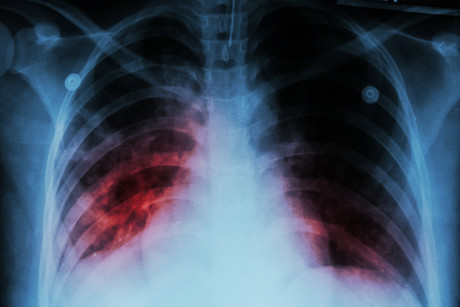Real-time tool to help treat drug-resistant tuberculosis

Australian researchers have designed a computer-generated model that will allow clinicians to tailor effective therapies for individual patients with multidrug-resistant tuberculosis (MDRTB), reducing drug resistance globally as a result.
According to the World Health Organization, TB is the leading cause of death globally from a single infectious agent. Mycobacterium tuberculosis typically affects the lungs, but can also infect other sites of the body.
Multiple antibiotics are used to treat TB, but the treatment process is long, and the emergence of drug-resistant bacteria is a considerable threat to global health. But this could be all about to change thanks to researchers from The Peter Doherty Institute for Infection and Immunity and The University of Melbourne’s Bio21 Molecular Science & Biotechnology Institute, who used cutting-edge genome sequencing technology to identify an MDRTB mutation in a particular patient.
Armed with this information, PhD student Malancha Karmakar developed a 3D computational approach to determine that a drug being used to treat the patient called pyrazinamide was ineffective due to the mutation. Rather than waiting two years (the standard treatment time for MDRTB) for the patient to complete treatment with pyrazinamide only to rule it redundant, the researchers were able to replace it with a different drug immediately.
Study co-author Associate Professor Justin Denholm, Medical Director of the Victorian Tuberculosis Program at the Doherty Institute, said the new tool is a game changer, noting that what would normally take decades in identifying the effectiveness of a TB drug could now just take a matter of hours.
“Right now, to use genetic tests to reliably predict whether a drug will be effective, someone needs to have been treated with a drug, failed that therapy and to be found to have a gene mutation,” Associate Professor Denholm said.
“Then you need enough people around the world to have that pattern to inform what treatment you prescribe for that particular mutation. It can take years.”
Co-author Professor David Ascher, from Bio21, said by understanding how mutations work within 3D space, the team could identify likely resistant mutations that have never arisen before.
“This is a huge boost to drug-resistant TB programs, which globally have to take a ‘best guess’ approach where they give the same, standardised therapy to people with MDRTB, with little capacity to adjust that in real time,” Professor Ascher said.
Once the tool is fully developed the researchers plan to make it available through the web, meaning clinicians around the world could enter the resistance mutations in the system to determine effective treatment regimens for their patients. In the meantime, the study results can be viewed in the American Journal of Respiratory and Critical Care Medicine.
Stem cell experiments conducted in space
Scientists are one step closer to manufacturing stem cells in space — which could speed up...
Plug-and-play test evaluates T cell immunotherapy effectiveness
The plug-and-play test enables real-time monitoring of T cells that have been engineered to fight...
Common heart medicine may be causing depression
Beta blockers are unlikely to be needed for heart attack patients who have a normal pumping...




